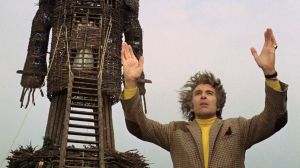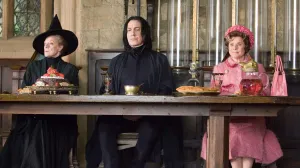28 Years Later: The Bone Temple will continue the story of Danny Boyle’s apocalyptic future world, ravaged by the rage virus unleashed in 28 Days Later. The first film ended with the mind-boggling introduction of “Jimmy” (Jack O’Connell) and his gang of Jimmies, who are roaming the mainland as a mad cult. Meanwhile, Dr. Ian Kelson was making strides in taming one of the infected “Alphas,” Samson (Chi Lewis-Parry), who is showing signs of intellect and familial connection that may indicate the infected are evolving, and maybe restoring their humanity.
Videos by ComicBook.com
The trailer for 28 Years Later: The Bone Temple included new footage that has rekindled fan theories suggesting that Danny Boyle and director Nia DaCosta are poised to change the entire 28 Days Later franchise in a major way.
(Theory) 28 Years Later: The Bone Temple Will Reveal the Endgame for The Infected

28 Years Later‘s entire premise takes the situation of the outbreak and the infected and advances it nearly 30 years, and there must be a reason for that time jump. One obvious reason for moving the timeline forward that far would be to create narrative space for the rage virus to evolve into some kind of new phase or form. When the trailers for 28 Years Later were released, the footage of bloated infected crawling through the forest, or the Alphas charging down their would-be victims, fueled the notion that some kind of evolution was taking place; however, the actual film threw in the twist that the biggest changes taking place in the infected were the tribal behavior taking place (in those now-infamous night vision sequences), and Samson’s intelligence, as well as his patriarichal connection to his mate and newborn child.
In most traditional zombie stories, the “cure” is the ultimate endgame goal for stopping the zompocalypse. However, 28 Days Later is clearly a different kind of take on the zombie-horror sub-genre. In the context of Boyle’s world, a cure for the infection may not be on the table; it may be far more interesting to have the infection ironically become the key to humanity evolving, with the infected organizing into some primal form of civilization. Meanwhile, that turn would be juxtaposed with people like Jimmy, whose “humanity” may be long gone after years surviving the apocalypse.
If this is indeed the angle that Boyle is taking with this story, it’s a big swing. The end theme would essentially be that humanity is hellbent on its own destruction, while nature will always find means of renewal and restoration.
28 Years Later: The Bone Temple will be in theaters on January 16, 2026.









